图像几何变换之透视变换
Posted liekkas
tags:
篇首语:本文由小常识网(cha138.com)小编为大家整理,主要介绍了图像几何变换之透视变换相关的知识,希望对你有一定的参考价值。
1. 基本原理
透视变换(Perspective Transformation)的本质是将图像投影到一个新的视平面,其通用变换公式为:

(u,v)为原始图像像素坐标,(x=x’/w’,y=y’/w’)为变换之后的图像像素坐标。透视变换矩阵图解如下:
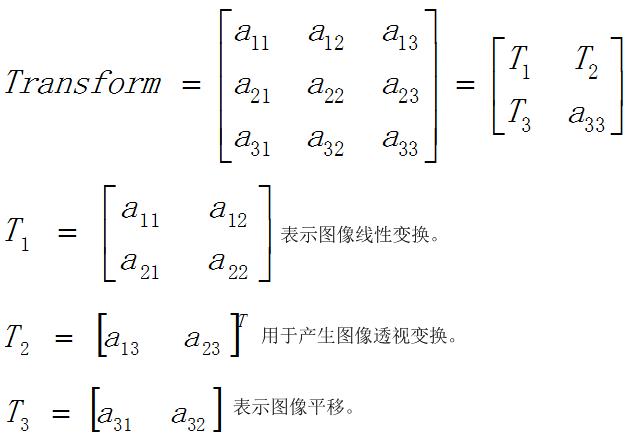
仿射变换(Affine Transformation)可以理解为透视变换的特殊形式。透视变换的数学表达式为:
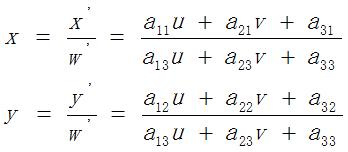
所以,给定透视变换对应的四对像素点坐标,即可求得透视变换矩阵;反之,给定透视变换矩阵,即可对图像或像素点坐标完成透视变换,如下图所示:
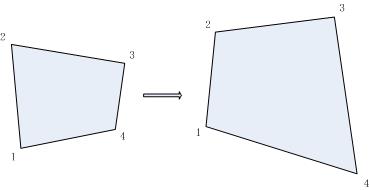
2. OpenCV透视变换函数
Mat getPerspectiveTransform(const Point2f* src, const Point2f* dst) // Calculate a perspective transform from four pairs of the corresponding points. // src – Coordinates of quadrangle vertices in the source image. // dst – Coordinates of the corresponding quadrangle vertices in the destination image. void warpPerspective(InputArray src, OutputArray dst, InputArray M, Size dsize, int flags=INTER_LINEAR, int borderMode=BORDER_CONSTANT, const Scalar& borderValue=Scalar()) // Apply a perspective transform to an image. // src – Source image. // dst – Destination image that has the size dsize and the same type as src. // M – 3*3 transformation matrix. // dsize – Size of the destination image. // flags – Combination of interpolation methods and the optional flag WARP_INVERSE_MAP that means that M is the inverse transformation (dst?src). // borderMode – Pixel extrapolation method. When borderMode=BORDER_TRANSPARENT, it means that the pixels in the destination image that corresponds to the “outliers” in the source image are not modified by the function. // borderValue – Value used in case of a constant border. By default, it is 0.
3. 程序
#include <iostream> #include "highgui.h" #include "opencv2/imgproc/imgproc.hpp" int main() { // get original image. cv::Mat originalImage = cv::imread("road.png"); // perspective image. cv::Mat perspectiveImage; // perspective transform cv::Point2f objectivePoints[4], imagePoints[4]; // original image points. imagePoints[0].x = 10.0; imagePoints[0].y = 457.0; imagePoints[1].x = 395.0; imagePoints[1].y = 291.0; imagePoints[2].x = 624.0; imagePoints[2].y = 291.0; imagePoints[3].x = 1000.0; imagePoints[3].y = 457.0; // objective points of perspective image. // move up the perspective image : objectivePoints.y - value . // move left the perspective image : objectivePoints.x - value. double moveValueX = 0.0; double moveValueY = 0.0; objectivePoints[0].x = 46.0 + moveValueX; objectivePoints[0].y = 920.0 + moveValueY; objectivePoints[1].x = 46.0 + moveValueX; objectivePoints[1].y = 100.0 + moveValueY; objectivePoints[2].x = 600.0 + moveValueX; objectivePoints[2].y = 100.0 + moveValueY; objectivePoints[3].x = 600.0 + moveValueX; objectivePoints[3].y = 920.0 + moveValueY; cv::Mat transform = cv::getPerspectiveTransform(objectivePoints, imagePoints); // perspective. cv::warpPerspective(originalImage, perspectiveImage, transform, cv::Size(originalImage.rows, originalImage.cols), cv::INTER_LINEAR | cv::WARP_INVERSE_MAP); // cv::imshow("perspective image", perspectiveImage); // cvWaitKey(0); cv::imwrite("perspectiveImage.png", perspectiveImage); return 0; }
原始图像及其透视变换结果:
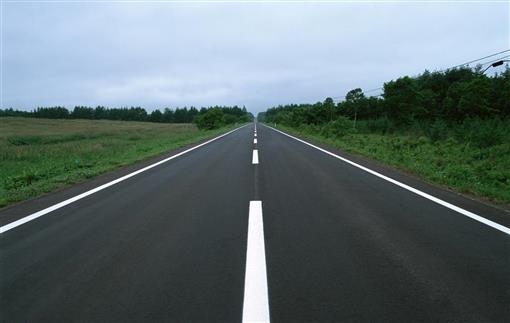
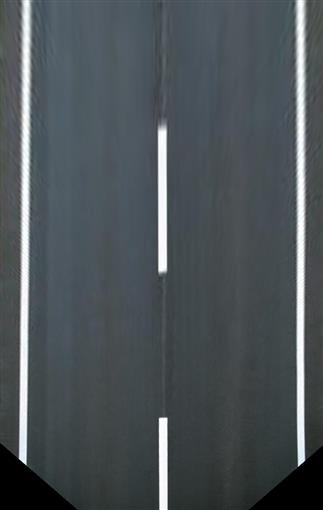
以上是关于图像几何变换之透视变换的主要内容,如果未能解决你的问题,请参考以下文章
OpenCV中的「透视变换 / 投影变换 / 单应性」—cv.warpPerspectivecv.findHomography